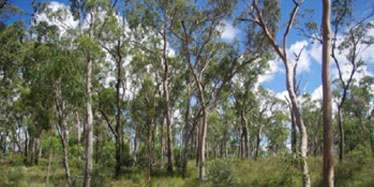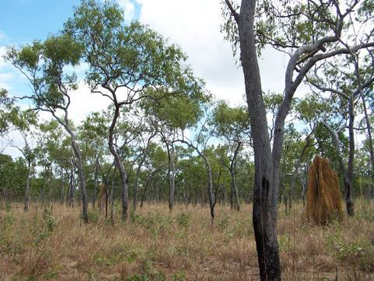Eucalypt woodlands


Habitat type: Eucalypt woodlands
Other key words: Box woodlands, blue gum woodlands, Eucalyptus, Corymbia, savannah, open woodlands
Description: Eucalypt woodlands are generally comprised of scattered eucalypts and bloodwoods (Corymbia) over an understory of grasses and sparse shrubs. The trees range in height from 2 to 30 m, and the canopy cover can vary from 20 – 50 %. Some of the more common and widespread woodland tree species are poplar box (Eucalyptus populnea), silver-leaved ironbark (E. melanophloia), narrow-leaved ironbark (E. crebra), forest red gum or Queensland blue gum (E. tereticornis), mountain coolibah (E. orgadophila), Dallachy's gum (Corymbia dallachiana), cabbage gum or poplar gum (E. platyphylla), yellow box (E. melliodora), grey bloodwood (C. clarksoniana) and Moreton Bay ash (C. tessellaris).
Some animals that use this habitat type: Brown treecreeper, jacky winter, grey kangaroo and squirrel glider.


